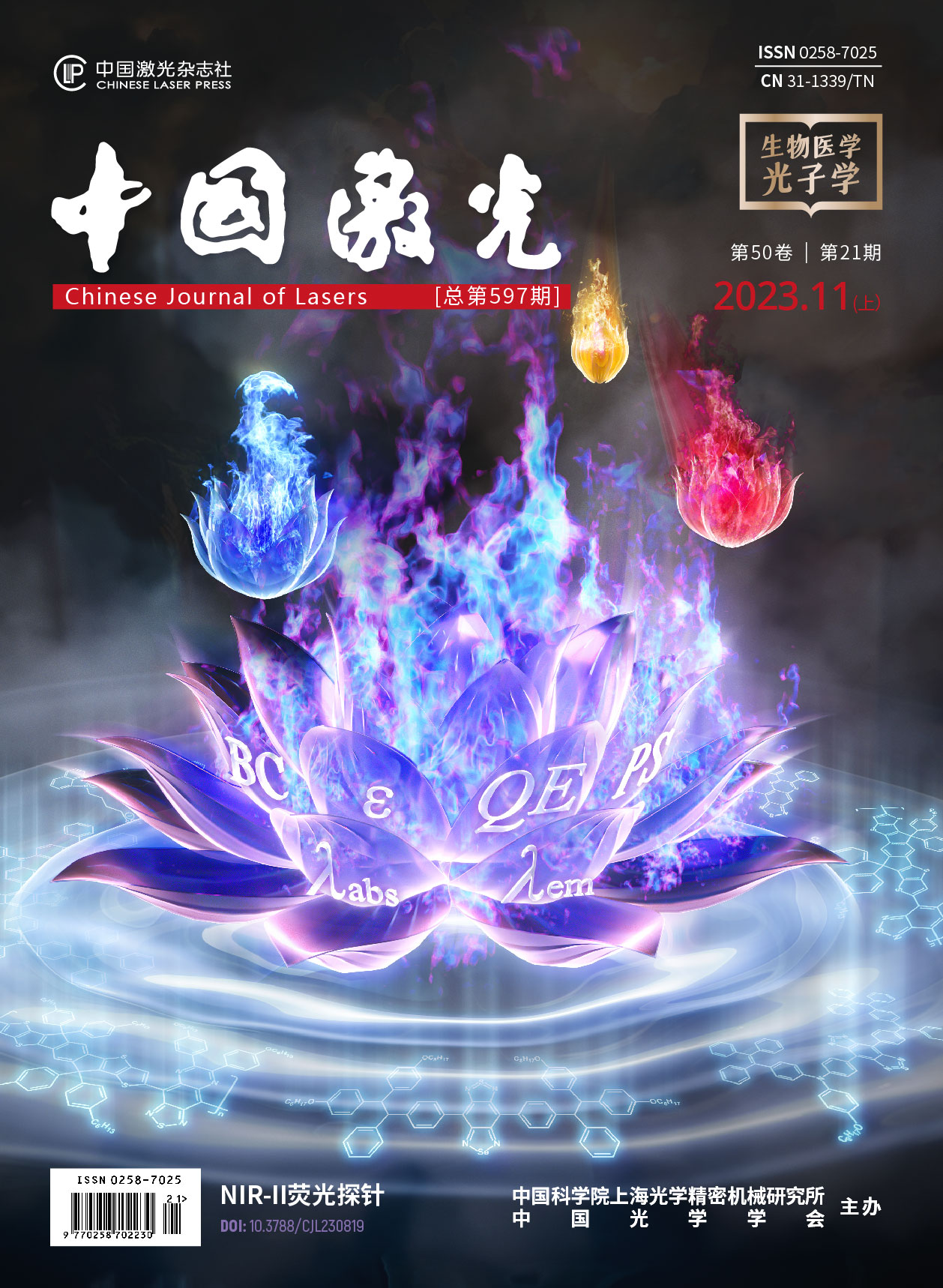飞秒激光双光子聚合制备3D水凝胶微结构及其应用
Extracellular matrix (ECM), which has an important impact on cell morphogenesis, adhesion, proliferation, and differentiation, is a dynamic and complex microenvironment. However, the mechanism by which cells receive and process information through ECM remains unclear. Therefore, investigating the mechanism of interaction between cells and the ECM will be of great significance in cell culture, tissue engineering, and other fields.
Research has shown that the microstructure of a material surface can regulate the proliferation, differentiation, and migration of cells. Hydrogels have a certain geometric shape and moisture content similar to soft tissue, and thus can simulate the ECM in vitro as well as locate and deliver therapeutic proteins in a controlled manner as a vehicle for cell transplantation. The patterned surfaces of hydrogels, cell scaffolds, and other microstructures prepared via micro/nano fabrication technology can simulate the growth and development environment of cells in vitro, particularly in a three-dimensional (3D) environment, enabling analysis of the correlation between the shape and function of cells, as well as of the mechanism behind the interaction between cells and the matrix. Traditional methods for preparing hydrogel microstructures have shortcomings including low accuracy and difficulty in regulating the morphology, which limits their application in the future.
Two-photon polymerization (TPP) technology, which uses a deep-penetrating near-infrared laser as the light source, is a new micro-nano manufacturing technology with true 3D fabrication capability and high penetration depth. It can be used to fabricate 3D micro-nano structures with arbitrary high resolution and is widely used in micro-nano photonics, micro-electromechanical systems, tissue engineering, and other fields. The 3D hydrogel microstructure prepared using TPP technology has a controllable morphology, high precision, appropriate stiffness, and good biocompatibility. This can better simulate the in vitro microenvironment required in tissue engineering and other fields, demonstrating its great potential for practical applications in the biomedical field. However, most photoinitiators lead to residues in organic solvents, and the generated cytotoxicity has corresponding effects on the biological environment. Therefore, it is necessary to design and prepare biocompatible water-soluble TPP initiators.
In summary, the application of hydrogel microstructures prepared using TPP technology in cell culture has made some progress, but there are still a series of challenges in the design of biocompatible TPP photoinitiators as well as in the application of bionics, tissue engineering, and other fields. Therefore, it is essential to summarize the relevant research for a comprehensive understanding of the hurdles in the application of hydrogel microstructures and future development directions.
In this review, the principle of two-photon polymerization and the research progress on photoinitiators are briefly introduced. Moreover, synthesis methods for water-soluble TPP photoinitiators with high initiation efficiencies have been introduced, including host-guest chemistry, hydrophobic interactions, introduction of non-ionic surfactants, and modification of hydrophilic groups. To enable 3D hydrogel microstructures to be fully applied in the field of biomedicine, TPP photoinitiators must exhibit lower cytotoxicity. Xing et al. efficiently prepared water-soluble TPP photoinitiators with high TPA cross sections and low threshold power through the Witting reaction and host-guest chemical interactions, and fabricated a high-resolution 3D hydrogel microstructure. Gao et al. prepared a new ionic water-soluble carbazole photoinitiator through host-guest interactions (Fig.4) and achieved the low laser threshold of 3.7 mW and high resolution of 180 nm, while the 3D hydrogel microscaffold structure maintained great biocompatibility in an aqueous environment. Introducing a nonionic surfactant or modifying hydrophilic groups is a simple and efficient method for improving water solubility. Li et al. synthesized a series of cyclic benzylketone-based TPP photoinitiators containing sodium carboxylates to enhance the water solubility through an aldol condensation reaction. They were evaluated in the dark using the MG63 cell line and found to have low cytotoxicity. Subsequently, the preparation of a 3D hydrogel microstructure via TPP and its application in biomimetics and biomedicine are introduced. Inspired by the response of the flytrap to external stimuli, Wang et al. used femtosecond laser fabrication technology to obtain intelligent responsive hydrogel microdrivers based on bionic asymmetric structures (Fig.7), achieving and adjusting the grasping and release behavior of microtargets by changing the pH value. Zhang et al. designed and prepared a series of 3D hydrogel microscaffolds with different pore sizes using biocompatible materials, such as PEGDA and PE-3A. The porosity of the scaffold was adjusted from 69.7% to 89.3% by changing the pillars and pillar spacing of the scaffold, and by regulating the cell behavior of the 3D hydrogel microscaffolds with different pore sizes (Fig.12). Finally, problems in the application of 3D hydrogel microstructures and their development prospects are summarized.
In recent years, many studies have focused on developing photoinitiators with high initiation efficiencies and low thresholds. To realize photo-crosslinking in an aqueous environment, a series of water-soluble TPP photoinitiators with high initiation efficiencies have been designed and prepared, expanding their applications in biomedical fields such as tissue engineering and drug delivery. Although some progress has been achieved in research on water-soluble TPP photoinitiators, the specific polymerization mechanism in aqueous environments requires further exploration. However, current TPP technology cannot satisfy the requirement for the rapid preparation of a large number of hydrogel microstructures, which hinders the mass culture of cells and tissues in vitro. Therefore, in future, the rapid fabrication of large-area hydrogel microstructures using TPP should be considered.
武昕宜, 段琦, 宾凡淳, 郑美玲. 飞秒激光双光子聚合制备3D水凝胶微结构及其应用[J]. 中国激光, 2023, 50(21): 2107401. Xinyi Wu, Qi Duan, Fanchun Bin, Meiling Zheng. Femtosecond Laser Two‑Photon Polymerization of 3D Hydrogel Microstructures and Their Applications[J]. Chinese Journal of Lasers, 2023, 50(21): 2107401.







